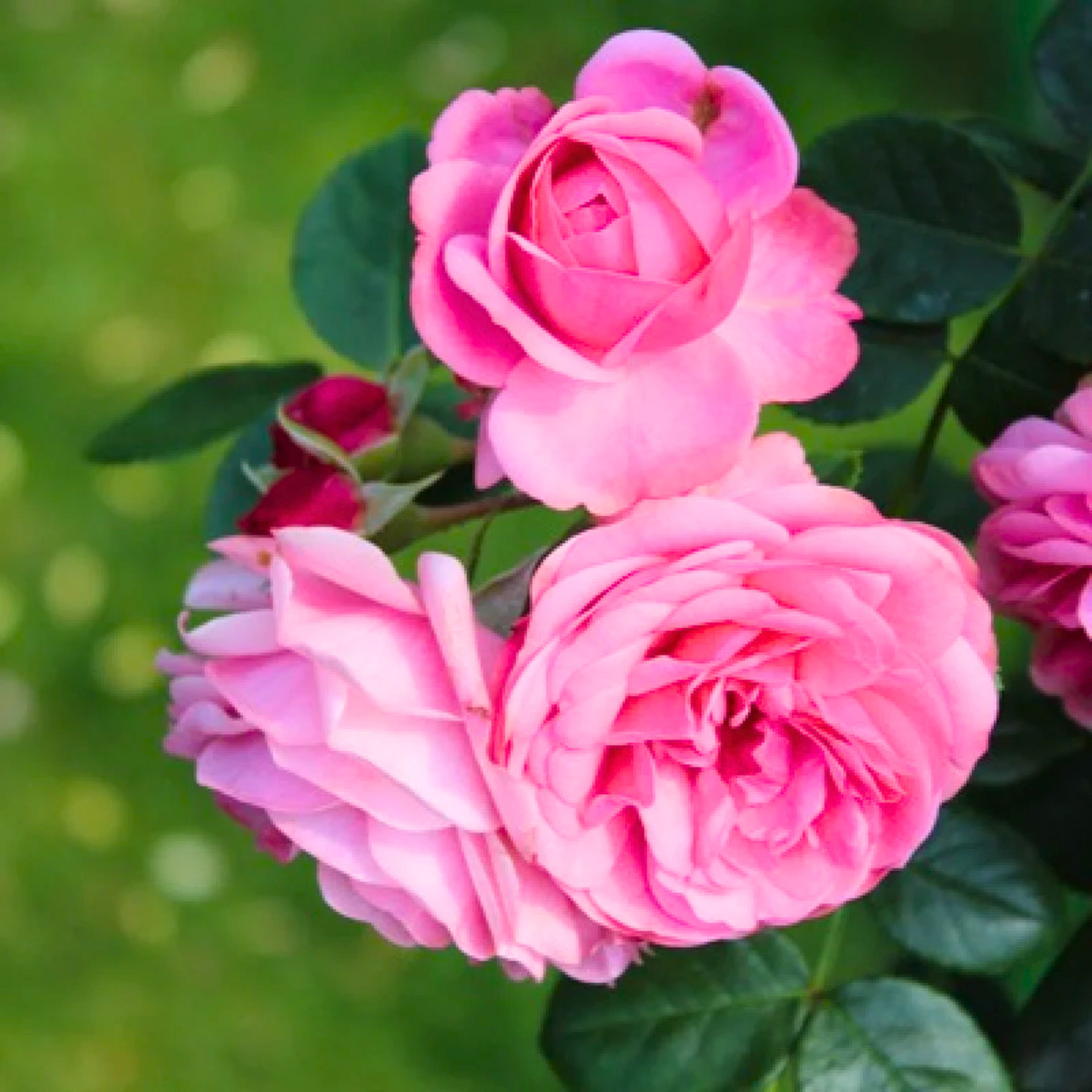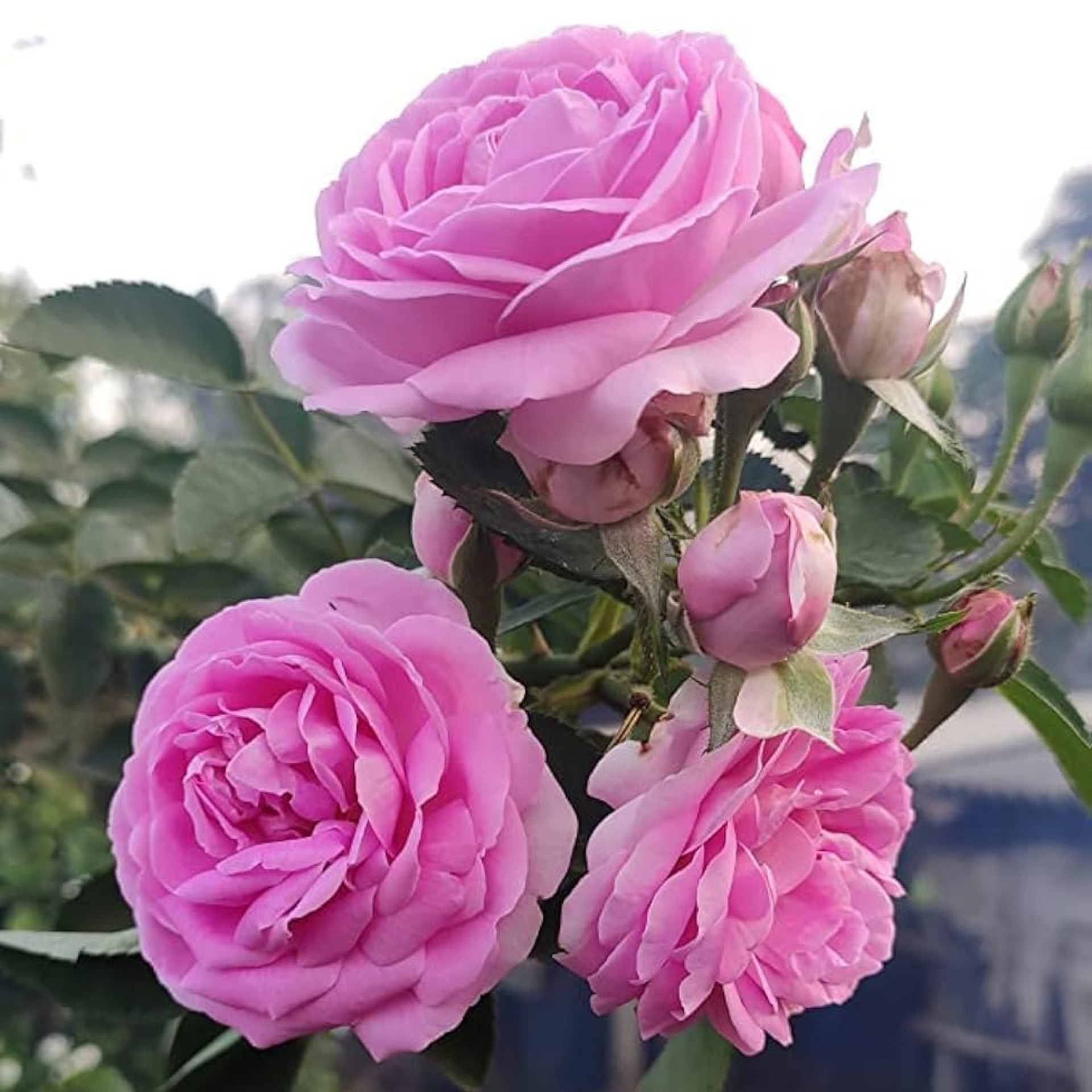

Green Paradise Desi Pink Fragrant Rose Plant Gulkand Rose Plant
Rs. 499.00
Rs. 449.00
Guaranteed Safe Checkout
The Green Paradise Gulkand Rose Plant: A Garden Treasure
About Desi Pink (Gulkand Rose) Plant
In the enchanting world of botanical beauty, where every flower seems to have its own unique charm, the Gulkand Rose Plant stands out as an enduring favorite. This exquisite cultivar of the Rosa genus is not just any ordinary rose; it is a fragrant emblem of tradition, health, and culinary delight. In this article, we'll explore the captivating story of the Gulkand Rose Plant, its rich history, cultural significance, and the many ways it adds a touch of elegance to our lives.
A Floral Legacy: The Origins of Gulkand Rose
- The Gulkand Rose, scientifically known as Rosa × damascena, has a storied history dating back millennia.
- This aromatic plant is believed to have originated in the Middle East, specifically in regions around modern-day Iran.
- Its delicate pink petals have graced gardens and landscapes across the world for over 2,000 years.
- This particular rose variety, known for its captivating fragrance, was cultivated primarily for its use in perfumes and the production of Gulkand - a sweet preserve made from rose petals.
- Gulkand, which means "sweet rose" in Persian, is a revered culinary gem, cherished for both its flavor and its medicinal properties.
Cultural Significance: A Rose by Any Other Name
- Throughout history, the Gulkand Rose has been more than just a pretty flower.
- It has held a special place in various cultures and traditions, often symbolizing love, beauty, and spirituality.
- In Persian culture, it's associated with the divine, with poets using its imagery to describe the beloved.
- In India, the Gulkand Rose takes on a dual role. Besides its use in perfumes and traditional medicine, it's cherished for its role in Indian cuisine, where Gulkand is a key ingredient in numerous dishes and desserts.
- The sweet, fragrant preserve is believed to have cooling properties, making it a popular choice during scorching summer months.
Gulkand Rose in Your Garden: A Delightful Addition
- For gardening enthusiasts, the Gulkand Rose Plant is a prized possession.
- Its medium-sized, bushy growth habit makes it suitable for various garden settings.
- The plant produces clusters of intensely fragrant, semi-double to double flowers in shades of pink.
- These blooms are not only aesthetically pleasing but also attract pollinators like bees and butterflies, contributing to a healthy ecosystem.
- Caring for the Gulkand Rose is relatively straightforward, provided you give it the right conditions.
- It thrives in well-drained soil, plenty of sunlight, and regular pruning to encourage new growth and maintain its shape.
Beyond the Garden: Gulkand Rose in Everyday Life
- The Gulkand Rose extends its influence far beyond the garden.
- Its aromatic essence can be found in a wide range of products, from perfumes and cosmetics to essential oils and herbal remedies.
- The soothing properties of Gulkand, derived from these roses, are believed to aid digestion, alleviate stress, and cool the body.
- Its culinary applications are equally impressive.
- Gulkand is an essential ingredient in Indian sweets like Gulkand Lassi, Gulkand Ice Cream, and the famous Paan.
- Its subtle rose flavor and cooling effect make it a delightful addition to many recipes.
Cultivating the Sweetest Bounty: A Guide on How to
Grow Gulkand Rose Plants
The allure of a rose is timeless and universal, but what if your rose bush could offer you more than just beauty? Enter the Gulkand Rose, a variety that not only graces your garden with its exquisite blooms but also provides the key ingredient for a delightful concoction called Gulkand. If you're intrigued by the idea of growing your own Gulkand Roses, you're in for a treat. In this guide, we will take you through the steps on how to grow and care for these special roses, ensuring that you have a bountiful harvest of fragrant flowers for both your garden and your kitchen.
Choosing the Right Location
- The first step to successfully cultivating Gulkand Rose plants is selecting the perfect spot in your garden.
- These roses thrive in full sunlight, so choose an area that receives at least six hours of direct sunlight daily.
- Ensure the soil is well-drained and slightly acidic, with a pH level of around 6.0 to 6.5. Adequate sunlight and the right soil conditions are the foundations of a healthy Gulkand Rose plant.
Selecting Your Roses
- When choosing your Gulkand Rose plants, opt for disease-resistant varieties like 'Double Delight' or 'Mister Lincoln.'
- These roses are not only stunning but also less prone to common rose diseases.
- Ensure you purchase them from a reputable nursery to guarantee their health and quality.
Planting Your Gulkand Roses
Prepare the Soil:
Before planting, amend the soil with well-rotted compost or organic matter. This enriches the soil and provides the necessary nutrients for your roses.
Dig a Hole:
Dig a hole that is slightly larger than the root ball of your rose plant. Ensure that the hole is deep enough to accommodate the roots without bending them.
Plant the Rose:
Place the rose plant in the hole, making sure the bud union (the swollen part where the stems meet the roots) is just above the soil level. Backfill the hole with soil, stroke it down gently, and water completely.
Watering and Feeding
- Gulkand Rose plants appreciate consistent moisture, so be sure to water them regularly, especially during dry spells.
- still, be conservative not to overwater, as this can lead to root spoilage.
- A layer of mulch around the base of the plant can help retain moisture and deter weeds.
- Fertilize your Gulkand Roses in early spring with a balanced, slow-release fertilizer.
- Follow the package instructions for the correct operation rate.
- This will provide the necessary nutrients for robust growth and abundant blooms.
Pruning and Deadheading
Pruning is essential to maintain the shape and health of your Gulkand Rose plant.
In late winter or early spring, when the plant is dormant, prune away dead or diseased branches.
Additionally, remove spent flowers (deadheading) to encourage continuous blooming throughout the growing season.
Pest and Disease Control
- Keep an eye out for common rose pests such as aphids, spider mites, and rose beetles.
- still, treat them instantly with insecticidal cleaner or neem oil painting, If you notice any infestations.
- Regularly inspect your plants for signs of diseases like powdery mildew or black spot and take appropriate action, such as using fungicides, if necessary.
Harvesting Gulkand Roses
- The ultimate reward for your efforts is harvesting the fragrant petals for making Gulkand.
- To do this, wait for the roses to fully bloom and then pluck the petals early in the morning when they are fresh and filled with essential oils.
- Rinse them gently to remove any dust or bugs and use them immediately or store them in an airtight container in the refrigerator.
Conclusion: A Timeless Classic
- In the world of horticulture, very few flowers can match the charm and cultural significance of the Gulkand Rose Plant.
- Its rich history, captivating fragrance, and versatile applications have earned it a cherished place in gardens, kitchens, and traditions across the globe.
- Whether you're an avid gardener, a culinary enthusiast, or simply someone who appreciates the finer things in life, the Gulkand Rose is a timeless classic that continues to bloom in our hearts and homes, a fragrant reminder of the beauty and wonder of the natural world.









